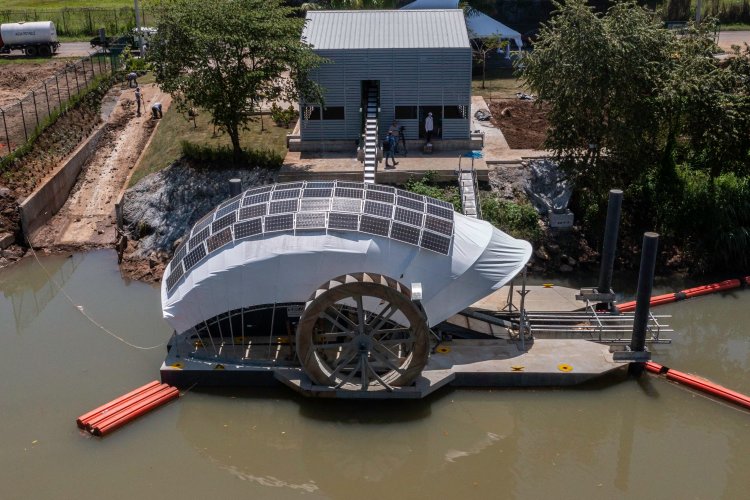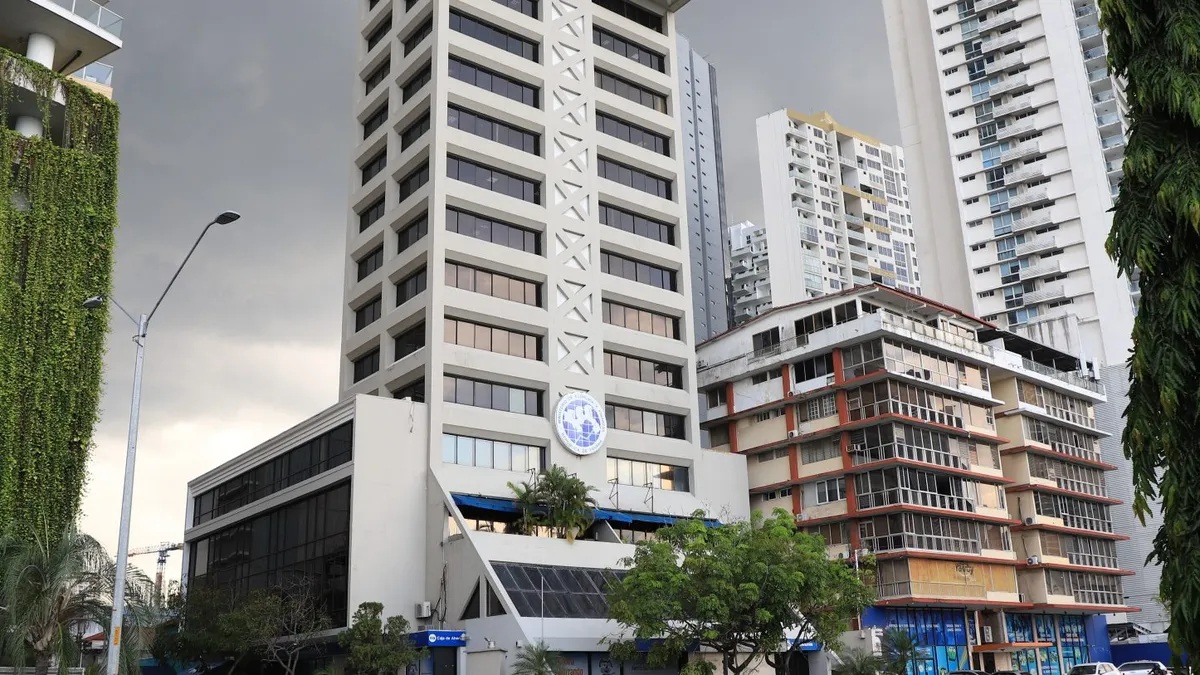Wanda, Trash Eating Machine, Prevents Tons of Garbage from Reaching the Sea in Panama

A giant hydraulic machine named “Wanda” has prevented hundreds of tons of trash from littering the mangroves near Panama’s capital. All kinds of waste flow down nearby rivers and, if nothing stops it, end up on the Pacific coast of the city.
“We have captured 256,000 kilos of waste that would have been in the mangroves and in the sea if it weren’t for Wanda” executive director of the Marea Verde Foundation, Laura González, says.
“There is a lot of rubbish, says González. “I think that nobody wants to live surrounded by rubbish and nobody wants to see the river in this condition,” she adds.
The garbage is carried by the current of the San Juan River to a barrier that crosses the channel.
Wanda is powered by entirely green energy: a water wheel and solar panels.
For now, it is the only river that has this system.
This coastal mangrove area is a vital resting point for hundreds of thousands of birds on their migratory route, but is threatened by pollution and urban growth.
Experts estimate that 30% of Panama City’s garbage is not collected and that some 100,000 tons of waste end up in the sea every year throughout the country.
When it rains, the current carries away the garbage dumped on the riverbanks, something common in the slums of this capital of 1.4 million inhabitants.
“We are working hard every day, especially to ensure that this waste does not reach the shore,” says Ezequiel Vargas, foreman of the crew that operates Wanda.
“Sadly, the garbage is constant every day, even if it doesn’t always rain, some of it ends up here,” he adds.

In Panama City and its surrounding areas, the garbage collection crisis is endemic. There are piles of garbage in the streets that have not been collected for days, while on the coast there are piles of all kinds of waste.
Authorities acknowledge the problem: “The environmental disaster of the rivers is unacceptable, we cannot continue polluting our rivers and seas,” said Environment Minister Juan Carlos Navarro in July when he took office.
According to a report by UN Environment, Panama City generates around 2,300 tons of garbage every day, of which 30%, mostly plastics, ends up in rivers, on the coast and in the sea.
The same report highlights that 61,500 tons of solid waste from Panamanian cities are dumped into the sea every year through sewers and drains. Another 40,657 tons of solid waste from rural areas are dumped into rivers and streams.
Among the rubbish that arrives at Wanda, plastic bottles and shampoo containers stand out, although footballs, toys, floats, food containers and even refrigerators can also be seen.
“It’s crazy, we received a plastic unicorn a few days ago, I really think we could make a gallery here,” says González.
According to Marea Verde, there are eight other facilities similar to Wanda in the world, including one in the US city of Baltimore, but the one in Panama is the only one in Latin America.
Wanda (an acronym for Wheel and Action) began operating on the Juan Díaz River and in 2023 captured 130 tons of waste.
But the amount of rubbish dumped in the river continues to increase. “This year we will probably exceed what we collected in the first year,” says Gonzalez.
“To be healthy we must dispose of garbage properly and remove plastic from our natural sources, that is the task that Wanda is doing,” said Minister Navarro.




